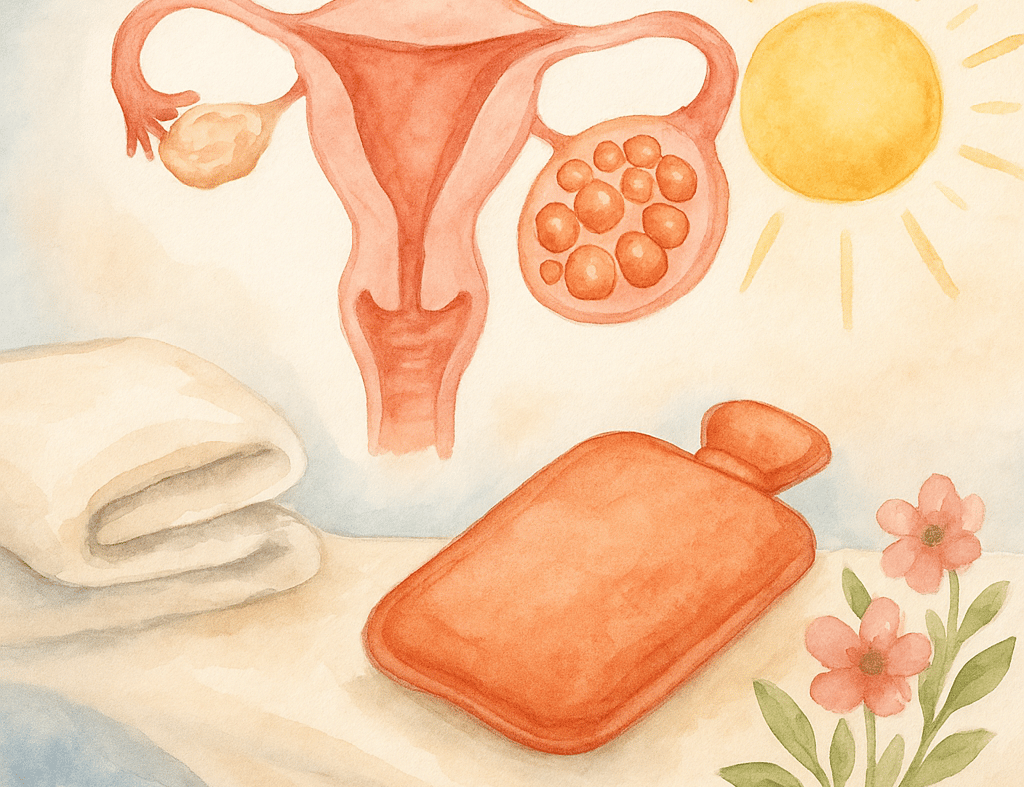Is the British Heat Wave Bad for Your Egg Follicles During IVF?
Is it safe to use heating pads or take hot baths during IVF? Here’s what you need to know about heat and egg follicles during fertility treatment.
WELLNESS & FOOD
6/23/20252 min read


When you’re going through IVF, every little detail can start to feel high stakes — what you eat, how you sleep, even whether it’s safe to take a hot bath. One common concern that pops up during stimulation is:
“Is heat bad for my egg follicles?”
Let’s break it down — what’s safe, what to avoid, and how heat can affect your developing eggs during treatment.
What Are Egg Follicles, Exactly?
During IVF stimulation (or “stims”), your ovaries are encouraged to grow multiple follicles — small fluid-filled sacs that each (ideally) contain a maturing egg. These follicles respond to hormonal signals, especially FSH (follicle-stimulating hormone), and grow rapidly over 8–12 days.
Keeping your body in balance during this time is essential for egg quality and follicle development — which brings us to the topic of heat.
Heat That’s Generally Considered Safe
Warm (not hot) baths or showers – totally fine. Think relaxing, not roasting.
Heating pads – safe in short bursts, especially on the lower back or abdomen, but keep them on low or medium heat and limit use to 10–15 minutes.
A sunny day or warm room – your external environment won’t harm your follicles unless you’re overheating or dehydrated.
💡 Tip: Stay hydrated and wear loose, breathable clothes during hot weather. Your comfort matters too.
Heat to Avoid During IVF Stimulation
Hot tubs and saunas – these raise your core body temperature significantly, which has been linked to negative effects on ovulation and egg development.
Steam rooms or infrared saunas – again, the risk is in overheating the body, which might affect hormonal regulation.
Very hot baths – especially for long periods (more than 15–20 minutes), these may increase your core temperature too much.
Tanning beds and infrared body wraps – best to steer clear, as their effects on reproductive health aren’t well studied but may increase oxidative stress.
What Does the Research Say?
While human data is limited, several studies suggest that increased core body temperature (above 38.5°C or 101.3°F) can impair:
Hormonal signalling
Egg maturation
Embryo quality in early development
Animal studies also show that hyperthermia can disrupt ovarian function and folliculogenesis — though the exact risks in humans undergoing IVF are still being studied.
So while one hot bath won’t ruin your cycle, it’s worth playing it safe.
Think of Your Ovaries Like a Greenhouse
Your growing follicles thrive in a stable, balanced internal environment. Not too hot, not too cold — just right. During IVF, your body is working overtime to grow multiple eggs at once. You want to avoid anything that might add stress to the system, including overheating.
What About After Egg Retrieval?
After your follicles are emptied during egg collection, your ovaries may still be enlarged. You’ll likely be advised to:
Avoid hot baths or saunas
Avoid strenuous activity (which could cause ovarian torsion)
Stay cool and well-rested while recovering
If you’re doing a fresh transfer, this is also a time to be gentle with your body — especially your pelvic area.
Final Tips for a Balanced, Heat-Safe IVF Cycle
Swap hot tubs for warm bubble baths or foot soaks
Use cool packs or gentle massage for discomfort, if needed
Stay cool on hot days — shade, fans, hydration
Don’t panic if you had a hot shower — your body is resilient
You’re doing a brilliant job navigating this process. Small changes can help create the best environment for your eggs — and every bit of support counts.
© 2025. All rights reserved.
